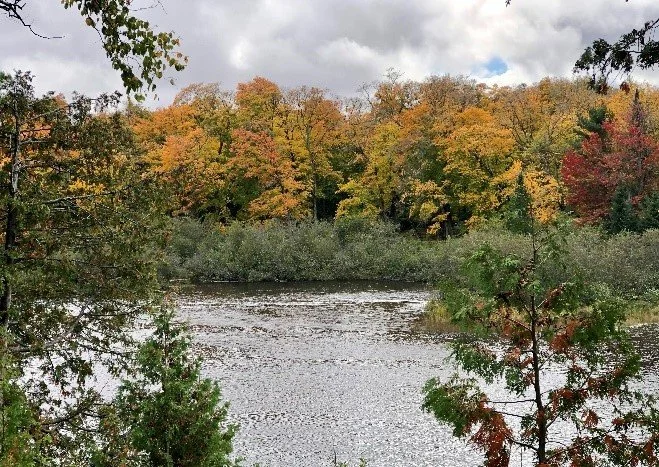Fall
Fall, in my opinion, is the most beautiful season of them all. The fiery reds and golden yellows of leaves; the crisp, clean air; the crunching of leaves underfoot; the fragrance of apples and mulled cider. And there is a logical, scientific explanation for the brilliance of fall. But I think there is more to the story than science. Science can explain the colors, but not the purpose.
The Science
Photo Credit: Howard Tanzman
Trees live by producing sugar through photosynthesis (sunlight + carbon dioxide yields sugar + oxygen). Chlorophyll is the green chemical compound in tree leaves responsible for photosynthesis. Chlorophyll is consumed during this process, and the tree replenishes it during the growing season. The abundance of chlorophyll with its green color masks out any other pigments in the leaves.
As the days shorten and the nights cool, the tree prepares for winter. Deciduous tree leaves cannot survive winter because fluids that travel through the leaf would freeze. As the tree gets ready to drop its leaves, chlorophyll is no longer replenished. This exposes other pigments that were previously covered up. One color is carotenoids. This compound provides the typical yellow and orange color of carrots, corns, daffodils, and other plants. What is the function of carotenoids in trees? Good question. Scientists do not have a clear answer.
The other pigment uncovered when chlorophyll diminishes is anthocyanins. These are red. They are not present in the leaf until the tree produces them in the fall. There are some theories regarding the purpose of anthocyanins, but apparently no definitive answer.
Photo Credit: Howard Tanzman
Evolution
The theory of evolution states that animals and plants change to meet to specific needs of their environment. Through genetic mutation, animals and plants that are well suited for the setting reproduce. Those that are not, die out. So, what is the purpose of fall leaf color? Does it provide an evolutionary advantage to trees? I have been unable to find any conclusive statement about the evolutionary purpose of autumn leaf color. And what about deciduous trees with limited fall colors? For example, many species of oak and elm trees only turn brown. But they still thrive.
The Animal Kingdom and Fall Colors
Perhaps fall colors interact in some manner with animals. However, most mammals are at least partially color-blind. Cats and dogs are commonly thought to be color-blind, but that is not entirely true; they can see some colors, although much less vibrantly than humans. This is true for most other mammals; they are either color-blind or see limited colors. Birds do see colors, but there is no apparent interaction with fall foliage.
Conclusion
Trees turn beautiful colors in the fall. There does not appear to be any reason or natural competitive/evolutionary advantage to do so. The only form of life that can see, acknowledge, or interact with fall foliage are homo sapiens, us. Although science can provide a chemical explanation for leaves turning, it cannot give a reason.
Photo Credit: Howard Tanzman
Sherlock Holmes is quoted as saying, “When you have eliminated all which is impossible, then whatever remains, however improbable, must be the truth." That applies here. The only reason I can see for fall color is the enjoyment of humans. And that is not an evolutionary or competitive advantage. It is not needed to sustain the tree. It’s an aesthetic.
The reason for fall colors? Some might call it divine intervention. Others may say intelligent design. I say God.


